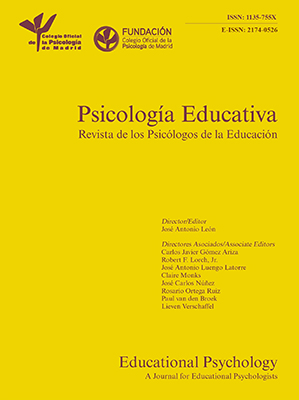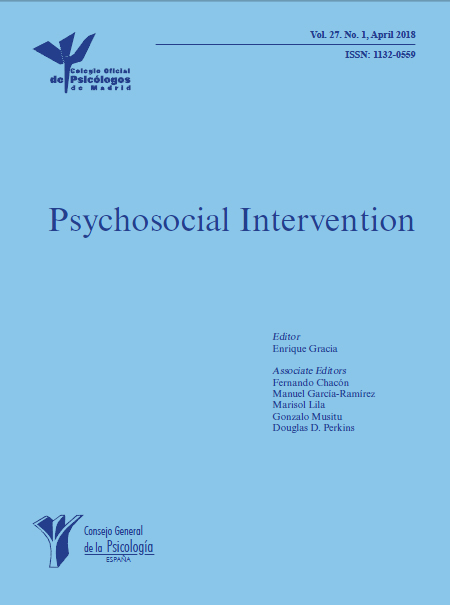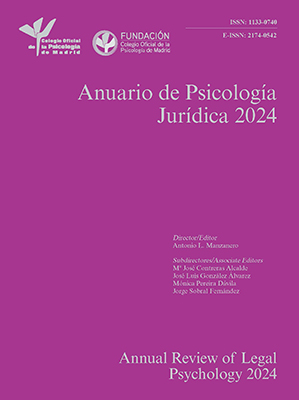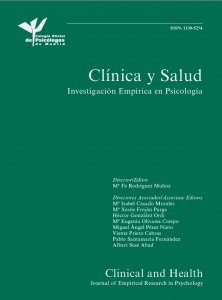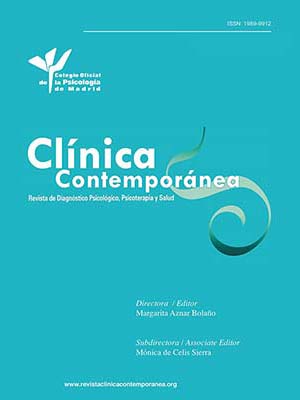
When Do Teleworkers Feel both Job-Satisfied and Productive? Boundary Conditions of the Telework Satisfaction-Productivity Relationship
[¿Cuándo se sienten satisfechos y productivos los teletrabajadores. Los factores moderadores de la relación entre la satisfacción y la productividad en el teletrabajo]
Ernesto del Castillo1, Sergio Madero1, Alexander Lapshun1, Juan I. Sanchez1,2
1Tecnológico de Monterrey, México; 2Florida International University, Miami, Florida, USA
https://doi.org/10.5093/jwop2025a5
Received 22 January 2025, Accepted 20 May 2025
Abstract
Recent research suggests that employee well-being plays a key mediating role in transmitting the positive effects of telework on productivity. However, there are circumstances in which employee satisfaction with telework is insufficient for employee productivity. To improve our theoretical understanding of the circumstances under which satisfied teleworkers do not necessarily feel productive while teleworking, we drew on the conservation of resources and job demands-control theories. We tested the hypothesis that there is a strong relationship between satisfaction with teleworking and self-perceived productivity when the alternative to telework required depleting many personal resources. Also, we hypothesized that when teleworking conditions make it challenging to meet job demands this relationship was attenuated. To test our hypotheses, we performed moderation analysis using data from 426 employees teleworking from Mexico City. We shed light on the circumstances under which employees see working from home as a win-win arrangement for them and their employers.
Resumen
Investigaciones recientes indican que el bienestar de los empleados desempeña un papel mediador fundamental en la transmisión de los efectos positivos del teletrabajo en la productividad. No obstante, hay circunstancias en las que la satisfacción de los empleados con el teletrabajo no es suficiente para mejorar su productividad. Para ampliar nuestra comprensión teórica de las situaciones en las cuales los empleados satisfechos con el teletrabajo no necesariamente se sienten productivos, nos basamos en las teorías de conservación de recursos y control de demandas laborales. Nuestra hipótesis plantea la existencia de una relación fuerte entre la satisfacción con el teletrabajo y la productividad autopercibida cuando la alternativa al teletrabajo implica la utilización excesiva de recursos personales. También planteamos la hipótesis de que dicha relación se debilita cuando las condiciones del teletrabajo dificultan la satisfacción de las demandas laborales.Para comprobar nuestras hipótesis, realizamos un análisis de moderación con datos obtenidos de 426 empleados que teletrabajaban desde la Ciudad de México. El estudio proporciona información valiosa sobre las circunstancias en las que los empleados consideran el trabajo desde casa como una opción favorable tanto para ellos como para sus empleadores.
Palabras clave
Teletrabajo, Satisfacción laboral, Productividad laboral, Trabajo en casa, México
Keywords
Teleworking, Job satisfaction, Productivity, Working from home, Mexico
Cite this article as: Castillo, E. D., Madero, S., Lapshun, A., & Sanchez, J. I. (2025). When Do Teleworkers Feel both Job-Satisfied and Productive? Boundary Conditions of the Telework Satisfaction-Productivity Relationship. Journal of Work and Organizational Psychology, 41(2), 39 - 49. https://doi.org/10.5093/jwop2025a5
Correspondence: e.delcastillo@tec.mx (E. del Castillo).
Teleworking or working from home (hereafter referred to as WFH) (Graizbord, 2015; Itam & Warrier, 2024) has been broadly defined as “an alternative work arrangement in which employees perform tasks elsewhere that are normally done in a primary workplace, for at least some portion of their work schedule, using electronic media to interact with others inside and outside the organization” (Gajendran & Harrison, 2007, p. 1525). The International Labor Organization argues that teleworking is a subcategory of working remotely that relies on information and communication technologies (Barriga Medina et al., 2021). Regardless of how one chooses to label it, the social distancing measures brought about by COVID-19 have propelled the adoption of teleworking worldwide (Thompson et al., 2022). Notwithstanding recent meta-analytic findings (Gajendran et al., 2024) suggesting minor but beneficial effects of telework, critics find that the business case for telework remains weak (Hackney et al., 2022). For instance, large corporations like Amazon and Dell have decreed that their employees need to “go back to the office,” where they believe employees are most productive (Hirsch, 2024). Prior research published in this same outlet has suggested that the positive effects of telework are mediated through employee well-being (Martinolli et al., 2023). However, we argue that, under certain circumstances, the fact that employees are satisfied with their telework arrangement does not necessarily guarantee that they also feel that they can be fully productive while teleworking. In this respect, we aim to make an incremental contribution to the literature by uncovering precisely those circumstances in which employees’ satisfaction with teleworking does not necessarily accompany the perception of being productive. Our study was conducted in one of the world’s most traffic-congested urban areas, specifically Mexico City, where many employees have understandably expressed a desire to continue teleworking at least once a week even after the COVID-19 pandemic ended (Lara-Pulido & Martinez-Cruz, 2023). Unlike prior research, and instead of attempting to uncover the main effects of telework on either job satisfaction or employee productivity, we specifically focused on the moderators or third variables that bound the relationship between employee satisfaction with telework and self-perceived employee productivity. Moderation analysis focuses on whether the relationship between two variables varies under different conditions. In our case, uncovering moderators of the telework satisfaction-productivity relationship should provide critical insights into the circumstances under which those who are satisfied with their telework arrangement are also likely to feel most productive and not just satisfied with a telework arrangement that might impede their productivity. Indeed, prior research conducted in non-remote work settings has shown that satisfied employees are not always the most productive (Judge et al., 2001). The same thing is probably true when teleworking: certain third variables would moderate the relationship between satisfaction with telework and self-perceived employee productivity because satisfied teleworkers do not always feel they can be productive by teleworking. Uncovering these moderating circumstances was the object of our study and it should prevent misunderstandings in situations where satisfied teleworkers should not be assumed to be productive. At the outset, we should clarify why we chose to focus on job productivity rather than on job performance. The latter typically refers to goal-related behavior, a primarily psychological concept. As Campbell and Weinik (2015) noted, performance must be distinguished from the outcomes of performance (e.g., sales volume), which are influenced by external factors in addition to the individual’s performance. Productivity, on the other hand, typically refers to the efficiency of production, and it is primarily an economic concept. Productivity is expressed as a ratio of aggregate output (i.e., output per unit of input). We felt that capturing teleworkers’ perception of productivity or the extent to which their efforts or inputs brought about a proportional amount of results or outcomes fit our research goal best, because we were interested in uncovering circumstances where telework hampers employee productivity. Our focus on self-perceived productivity also warrants explanation. Self-perceived productivity might not perfectly correlate with more objective productivity measures, but it should capture the circumstances under which those who telework are likely to hold a positive attitude that leads them to feel productive (Judge et al., 2001). Attitudes serve as guidelines and facilitators of behaviors (Fishbein & Ajzen, 1974). As stated by Eagly and Chaiken (1993), “In general, people who evaluate an attitude object favorably tend to engage in behaviors that foster or support it, and people who evaluate an attitude object unfavorably tend to engage in behaviors that hinder or oppose it (p. 12)." We theorized that two types of contextual factors would moderate the job satisfaction-self-perceived productivity relationship: (1) factors related to the alternate location in which the job would be performed if it were not performed from home (alternate location determines the commuting time and, therefore the amount of personal resources to be conserved through telework compared to working at the office) and (2) factors related to the nature of certain occupations that make face-to-face interactions critical for successful productivity because such face-to-face interactions are precluded or at least less than optimally performed when WFH. For the first contextual factor, commuting time, we grounded our hypotheses on the conservation of resources (COR) principle inherent in COR theory (Halbesleben et al., 2014; Hobfoll et al., 2018). This principle predicts that individuals will prefer WFH to conserve personal resources when such resources would be otherwise depleted in high-resource consumption activities, such as the long commute time to and from work that characterizes traffic-congested metropolitan areas like Mexico City. Therefore, when the alternative to WFH (i.e., commuting to work) is close to exhausting personal resources, employee satisfaction with WFH will be more strongly correlated with self-perceived productivity than in circumstances where commuting is not as taxing on personal resources and, therefore, it does not interfere so dramatically with the workers’ ability to perform the job in person. In other words, the drain of personal resources spent on commuting will convince employees that WFH is the most satisfying and the work modality that makes them most productive. Our second set of hypotheses focused on variables related to occupational demands for live, face-to-face interactions. We drew on Karasek’s (1979) job demands-control theory (Kain & Jex, 2010), which states that control buffers the impact of job demands on workers’ stress, thereby increasing job satisfaction with challenging job obligations, as long as these job demands seem controllable. We pinpoint specific occupations where certain face-to-face activities are crucial to job performance, but owing to teleworking employees have less than perfect control over them. In these cases, the job satisfaction-productivity relationship will be attenuated because employees satisfied with their teleworking job might still feel that teleworking limits their ability to engage in certain job activities that can make them most productive. We pinpoint specific occupations where certain face-to-face activities are crucial to job performance, recognizing that job performance encompasses the behaviors expected of employees in these roles (Campbell & Weinik, 2015). However, employees may have reduced control over these critical activities due to the external factors impinging on teleworking (Vega et al., 2015). Thus, while individuals may report high levels of job satisfaction with their teleworking arrangement, this satisfaction might not necessarily translate into enhanced productivity. As a result, the job satisfaction-productivity relationship might be attenuated because employees would feel that teleworking restricts their engagement in essential job activities, thereby impacting their overall productivity. In our literature review, we prioritized recent studies on the impact of WFH on job satisfaction and productivity, especially in Mexican and Latin American contexts, which are underrepresented in the literature compared to research conducted in WEIRD (i.e., western, educated, industrialized, rich, and democratic) contexts. About 60% of the articles we reviewed were in a Mexican or Latin American context and most were published during or after the COVID-19 pandemic. WFH in Mexico Before the COVID-19 pandemic, WFH was not a widespread practice in Mexico. Leyva and Mora (2021) estimated that just 10.6% of formally employed individuals in Mexico participated in WFH before the pandemic. Even during the lockdown, Mexico’s telework rate remained relatively low because the government recommended voluntary confinement rather than enforcing a mandatory lockdown, thus leaving businesses to decide on their restrictions (Jaimes Torres et al., 2021). However, the Cranfield Network on International Human Resource Management Survey (CRANET) indicated an increase in Mexican companies adopting telework. The CRANET survey revealed that 19.4% of Mexican companies reported that at least 20% of their employees teleworked before the pandemic. This rate surged to 63.6% during the pandemic and stayed at 45.8% afterward. While it is challenging to determine the exact rate of telework adoption in Mexico, the CRANET survey indicates a growing trend. Workplace Location as a Moderator Oviedo-Gil and Cala Vitery (2023) argue that workers’ acceptance of WFH depends on their ability to perform the job outside of the office, employers’ willingness to allow this modality, and the personal convenience of this setup. In Mexico, Ordoñez-Parada (2018) investigated the antecedents of job satisfaction among 247 teleworkers and found that work environment conditions were crucial to job satisfaction, independence, and working hours. Studies conducted during the peak of the pandemic outbreak in Mexico, when mortality numbers and hospitalizations were among those at the top of the world, also pointed to the importance of work environment conditions (Barriga Medina et al., 2021; Jaimes Torres et al., 2021). Wang et al. (2023) investigated responses from more than 2,000 teleworkers across the US. They found that employees seek flexibility concerning time and physical location, good living conditions, short or no commute, and little work-family interference while WFH. Stoian et al. (2022) investigated almost 300 employees in different countries of the European Union. The availability of stable infrastructure (at the workplace and home) that enables flawless WFH performance, a good relationship with the supervisor, opportunities for knowledge exchange, work-life balance, no professional isolation, and saving commuting time were pivotal factors for participants. Eliminating commuting time through WFH is particularly important in Mexico and other Latin American countries with less-than-ideal infrastructure and transportation from working-class neighborhoods to city centers, as Lara-Pulido and Martinez-Cruz (2023) pointed out. Hess and Narteh-Yoe (2020) suggested that about 80% of commuters in Mexico City wish to change their daily routine to reduce long commuting time. Oviedo-Gil and Cala Vitery (2023) ranked Mexico City as the second worst place in job quality in LATAM, primarily because of substantial commuting time. Ton et al. (2022) reported that 71% of research participants wished to continue WFH even after lifting all pandemic-related restrictions, as they experienced an improvement in their work-life balance owing to a dramatic decrease in commuting time. These prior findings led us to hypothesize that certain location-related variables related to the conservation of personal resources (e.g., time, effort) associated with WFH will moderate the relationship between job satisfaction and productivity. Lapshun and Madero (2023) noted that WFH increases employees’ perceived productivity compared to working from other locations outside the employee’s residence, as long as the latter is suitable for telework. Cuerdo-Vilches et al. (2021) also noted the importance of work dwelling quality (noise level, air quality, lighting) on teleworkers’ productivity. Thompson et al. (2022) pointed out that one of the primary advantages of WFH lies in being sheltered from distractions at work. Based on Karasek’s (1979) job demands-control model, we predicted that not having a dedicated workspace while WFH might interfere with employees’ ability to control their jobs. Indeed, working from remote locations other than one’s residence poses challenges and distractions that make WFH virtually impossible for many employees. These conditions were particularly challenging during the pandemic, when most co-sharing workspaces were closed, and other public places, such as coffee shops, dramatically cut their schedule. Although not every household meets the bare minimum conditions necessary for productive WFH (Berniell & Fernandez, 2021; Cuerdo-Vilches et al., 2021), working from one’s residence seems most likely to provide a distraction-free location suitable for telework. Therefore, Hypothesis 1a: The relationship between employee satisfaction with teleworking and employee self-perceived productivity will be moderated by whether employees telework from home, such that the relationship will be stronger for those who telework from home than those who telework from other locations. Thompson et al. (2022) researched two groups of teleworkers and one group of non-teleworkers, asking them why they would or would not like to telework. Three of the 2,054 reasons shared were voiced most frequently: avoid commuting, increase productivity, and meet family demands. Therefore, Thompson et al.’s data support the idea that cutting commuting time is one of the primary reasons behind WFH. Indeed, commuting long distances, particularly in the heavy traffic conditions that characterize many Latin American metropolitan areas, is likely to take a toll on employees’ resources like time and energy. We did posit that traveling more than 50 kilometers (equivalent to approximately 31 miles) from home to work is a critical threshold because this distance typically requires commuting time of at least one hour each way. Indeed, well before the COVID-19 pandemic, Graizbord (2015) highlighted the time wasted commuting in megacities like Mexico City. Wang et al. (2023), Stoian et al. (2022), and Lara-Pulido and Martinez-Cruz (2022) have also called attention to commuting distance as one of the primary reasons for WFH. Due to high gas prices, long commuting distances are also a financial burden (Lara-Pulido & Martinez-Cruz, 2022). Not surprisingly, Ton et al. (2022) reported that teleworkers believed their productivity increased when they cut commuting. Unlike in some European cities, where public transportation is reliable and widely available, commuting trips in Mexico City are subject to random traffic fluctuations and often occur in crowded, small vehicles (Graizbord, 2015). Hence, Hypothesis 1b: The relationship between employee satisfaction with WFH and employee self-perceived productivity will be moderated by the commuting distance between home and the workplace, such that this relationship will be stronger for those whose workplace is at least 50 kilometers away from their home than for those living closer to their workplace. Control over time is vital in the pursuit of basic needs satisfaction (Ordoñez-Parada, 2018). Gaining control over one’s own time might undoubtedly be a factor that drives employee satisfaction with WFH (Knight & Westbrook, 1999). Indeed, commuting time during peak hours is a big unknown in large urban areas in Latin America, even in short distances. Navigation system statistics suggest that commuting by car during rush hours involves up to 195 hours a month on the road in Mexico City (TomTom, 2020). Due to the high commuting cost relative to low-income levels, Arredondo (2017) estimated the financial burden of commuting to be as high as 40% of the annual middle-class income. Therefore, commuting time is probably the most straightforward operationalization of the personal resources consumed by commuting because distance is not always a reliable indicator of time owing to varying traffic conditions. Thus, Hypothesis 1c: The relationship between employee satisfaction with WFH and employee self-perceived productivity will be moderated by commuting time between home and the workplace, such that this relationship will be most vital for those whose commuting time will take at least two hours a day (e.g., one hour each way) than for those whose commuting time is shorter. Job Characteristics as Moderators Raisiene et al. (2022) investigated satisfaction with WFH among educators and managers. Educators felt stressed by WFH when WFH drastically cut their social interaction. They also admitted to experiencing low self-management capabilities while WFH. Hajal (2022) noted that the propensity to telework correlates with employees’ ability to do so effectively. In certain occupations like education and the commercial sector, face-to-face, live interactions have a critical impact on productivity, and therefore suppressing the ability to interact face-to-face should understandably reduce the workers’ ability to excel in their jobs. According to Karasek’s (1979) job demands-control theory, the inability to exercise complete control over one’s job by enacting face-to-face live interactions that might dramatically boost productivity should attenuate the satisfaction with the WFH-productivity relationship. Even though some employees enjoy the convenience of WFH, not all of them might feel productive because the WFH modality curtails their perceived ability to control their jobs. Consequently. Hypothesis 2a: The relationship between employee satisfaction with WFH and employee self-perceived productivity will be moderated by occupation and sector of employment, such that this relationship will be weakest for those employed in occupations requiring a great deal of personal interaction (e.g., services, education, sales) than for those employed elsewhere. Hunton and Harmon (2004) suggested that the factors discouraging telework include the psychosocial meaning of joining others at a physical workplace. In their reviews of the role of office design in employees’ motivation, Thompson et al. (2022) and Marques de Macêdo et al. (2020) argued that the office is often a place for collaboration, inspiration, and creation and not just a space where people do the job. Thus, Hypothesis 2b: Employee satisfaction with WFH and employee self-perceived productivity will be moderated by the type of office space, such that this relationship will be weakest when office spaces are designed to motivate and inspire meaningful interactions. Gentilin (2021) asserted that one of the characteristics of the knowledge economy is the increase in the number of occupations that provide considerable flexibility to their incumbents, primarily in occupations that require high skills and education. Indeed, evidence gathered during the COVID-19 pandemic suggests that telework is most likely to exist in developed economies (e.g., 37% of total jobs in the US), whereas it is less frequent in emerging economies (Berniell & Fernandez, 2021; Saltiel, 2020). Berniell and Fernandez (2021) investigated teleworkable jobs in Latin America. They concluded that most remote jobs are in large urban areas. The ratio of teleworkable jobs in these urban areas often exceeds 20%, thus approaching the ratio of teleworkable jobs found in developed countries. The higher industrialization of urban areas likely explains this figure, owing to the availability of suitable technology and telecommunications infrastructure in urban areas and the higher density of corporate headquarters. Consider, for instance, that approximately 44% of the Latin American population does not enjoy internet connectivity (Palomino Pichihua & Ruiz Sánchez, 2023) and that most of this population lives outside urban areas. The jobs that best enable WFH in Latin America are understandably concentrated in highly populated urban areas. Specifically, jobs in functional areas such as administration, marketing, and indirect services that do not necessarily require in-person interactions (López-Igual & Rodríguez-Modroño, 2020) seem most “teleworkable.” In contrast, the degree of job control in hands-on functional areas related to production, operations, supply chain, and logistics appears lower when working remotely. According to Karasek’s (1979) job demands-control theory, this reduction in perceived control will attenuate the relationship between job satisfaction and perceived productivity because even though employees might be satisfied with the comfort of working from home, they might feel that distance impedes a series of interactions and activities closely tied to being productive on their job. Therefore, Hypothesis 2c: The relationship between employee satisfaction with WFH and employee self-perceived productivity will be moderated by the functional area of the job, such that this relationship will be stronger for jobs in functional areas such as administration, marketing and indirect services that do not necessarily require in-person activity than for jobs related to production, operations, supply chain, and logistics, which are more likely to demand hands-on and in-person activity (a summary of the hypotheses can be seen in Figure 1 below. Data Collection We collected data by surveying Mexican white-collar workers with WFH experience. We employed a snowball sampling technique where trained undergraduate students contacted employed participants over 18 years old who held a social security number. Participants received an explanation of the survey’s purposes and assurances of the strict confidentiality of their responses before giving consent. The survey was hosted on the Qualtrics platform during the summer of 2023. Measures We measured the employees’ perceptions regarding two crucial factors while working remotely: satisfaction with WFH and self-perceived productivity. Three research faculty members, chosen for their expertise in survey development, helped us assess survey relevance and readability. We initially consulted each expert separately, incorporating their feedback to eliminate or refine the wording of specific items. In the second phase, the experts convened to discuss the items collaboratively until they reached a consensus. The procedure generated 12 items: seven assessing job satisfaction and five assessing self-perceived productivity while WFH. We employed a 5-point Likert-type scale ranging from 1 = strongly disagree to 5 = strongly agree to evaluate the items. The Appendix lists the final 12 items. The survey gathered 20 additional items: one integrity check, six demographic questions, one item assessing the preference for working from home, three related to worker location, four concerning commuting experiences, and five regarding the nature of the job. Sample To ensure that results were not contaminated by careless responding, participants who failed an integrity-check item, completed the survey too quickly (2 standard deviations below the mean), or showed overly consistent patterns in their responses were excluded. As a result of this screening process, we reduced the final sample size to 426 participants from 439 initial responses. Table 1 summarizes the survey respondents’ demographics. Employees’ Characteristics Fifty six percent of the participants were women and 44% were men. Most of the respondents (54%) were single. Regarding generation, only 2% were older than 60, 22% ranged from 43 to 60, 55% ranged from 42 to 28, and 21% were younger than 28. Exploratory Factor Analysis Measurement Model We conducted Exploratory Factor Analysis (EFA) using Stata 17 to assess our measurement model. Principal component analysis (PCA) with varimax rotation and Kaiser normalization helped us explore the underlying factor structure. The EFA yielded a two-factor configuration explaining 78% of the total variance. Through an interactive EFA approach (Hair et al., 2019), five items that were poorly loaded on any factor (< .50) were excluded. The remaining seven items formed a two-factor solution that accounted for 95.5% of the total variance. As a robustness check, we also conducted EFA using polychoric correlations instead of Pearson correlations. The results confirmed the same two-factor structure of seven items, with only a slight increase in variance explained. After conducting EFA, we evaluated the reliability of the identified factors using Cronbach’s alpha and McDonald’s omega. Both measures must have a minimum value of .70 to ensure the internal consistency and homogeneity of the items. Following Timmerman and Lorenzo-Seva’s (2011) recommendation, we also performed minimum rank factor analysis (MRFA) to validate the data structure further detected using PCA with varimax rotation. Employing 500 random simulated samples and a 95% confidence interval demonstrated that the real eigenvalues for both job satisfaction and perceived productivity were higher than the random eigenvalues at a 95% confidence interval. Thus, the number of factors was consistent with the number of underlying theoretical constructs. Table II shows the EFA results (Table 2). Table 2 EFA Results   Note. Source: author elaboration. Factors with eigenvalues > 1. MRFA Parallel Analysis requires higher actual values than the random values with 95% CI. Confirmatory Factors Analysis We further conducted confirmatory factor analysis (CFA) to check our measurement model’s discriminant validity. Our data failed to pass the Doornik-Hansen multivariate normality test (p-value = .00), so we conducted CFA using the Satorra-Bentler-adjusted goodness-of-fit indices. The computed values for the root mean square error of approximation (RMSEA = .04), the standardized root mean square residual (SRMR = .027), and the comparative fit index (CFI = .979) were adjusted to account for the effects of non-normally distributed data, all of which exceeded the recommended thresholds (Hair et al., 2019). Following Henseler et al. (2015), we used the heterotrait-monotrait (HTMT) ratio to assess discriminant validity. The estimated HTMT ratio (.27) remained far below the conventional threshold of .90, thus supporting the discriminant validity of the underlying constructs. After validating the two critical variables in our analysis—job satisfaction with remote work (SATISF) and self-perceived productivity while working remotely (PRODUCT)—we applied a linear regression model to predict their corresponding factor scores. Subsequently, we normalized these predicted values to a range between 0 (minimum) and 100 (maximum). The primary goals of normalization were twofold: to enhance the interpretability of the predicted factors and to prevent the necessity of centering the variables during moderation analysis. Moderation Analysis After checking our measurement model, we conducted a moderation analysis to test our hypotheses. Moderation analysis aimed to determine whether the relationship between job satisfaction with remote work (SATISF) and self-perceived productivity while working remotely (PRODUCT) was influenced by moderator factors (Z). Equation 1 shows the regression model used to test our hypothesis. In Equation (1), PRODUCT is the dependent variable, SATISF is the independent variable, and Zi represents the moderator variables depicted in Figure 1. According to Dawson (2013), the coefficients β1 and β2 indicate the individual main effects of SATISF and the moderator variable (Z) on the dependent variable, whereas β3 denotes the moderation effect. Therefore, β3 is the critical coefficient representing the two-way interaction (SATISF*Zi) effect. Thus, determining the shape, magnitude, and statistical significance of β3 was the primary focus of the analyses. To avoid biased coefficient estimates owing to endogeneity, we included an indicator variable in the regression to control for the respondents’ self-revealed preference for work from home (WFH), as it is well known that omitted variables correlated with the error term (µ) are a source of endogeneity. This variable comprises three groups: the first captures those who preferred WFH to hybrid work (the second category) or in-situ work (the third category). Also, we included gender as a control variable. As running the regression analysis requires omitting one group to avoid perfect multicollinearity, we omitted the first (now the baseline comparison group). Thus, the coefficients should be interpreted relative to the group preferring WFH and to the group of male respondents. The following section describes how we tested each one of the moderator variables (Zi) included in our hypotheses (e.g., type of remote work location, job characteristics). Location as Moderator of the SATISF-PRODUCT Relationship Table 3 summarizes the moderation regression results for our first set of hypotheses. All three models had an adjusted R-squared value above .70, indicating that the model explained at least 70% of the variance in the outcome productivity variable. We observed positive and statistically significant relationships with SATISF coefficients across all models. Again, the self-revealed preference variable consistently showed negative and highly significant coefficients across the three models. In line with the expectations, the negative impact of remote work was more significant for those who prefer in-person work than those who prefer hybrid work. Table 3 Hypothesis 1: Location Variables  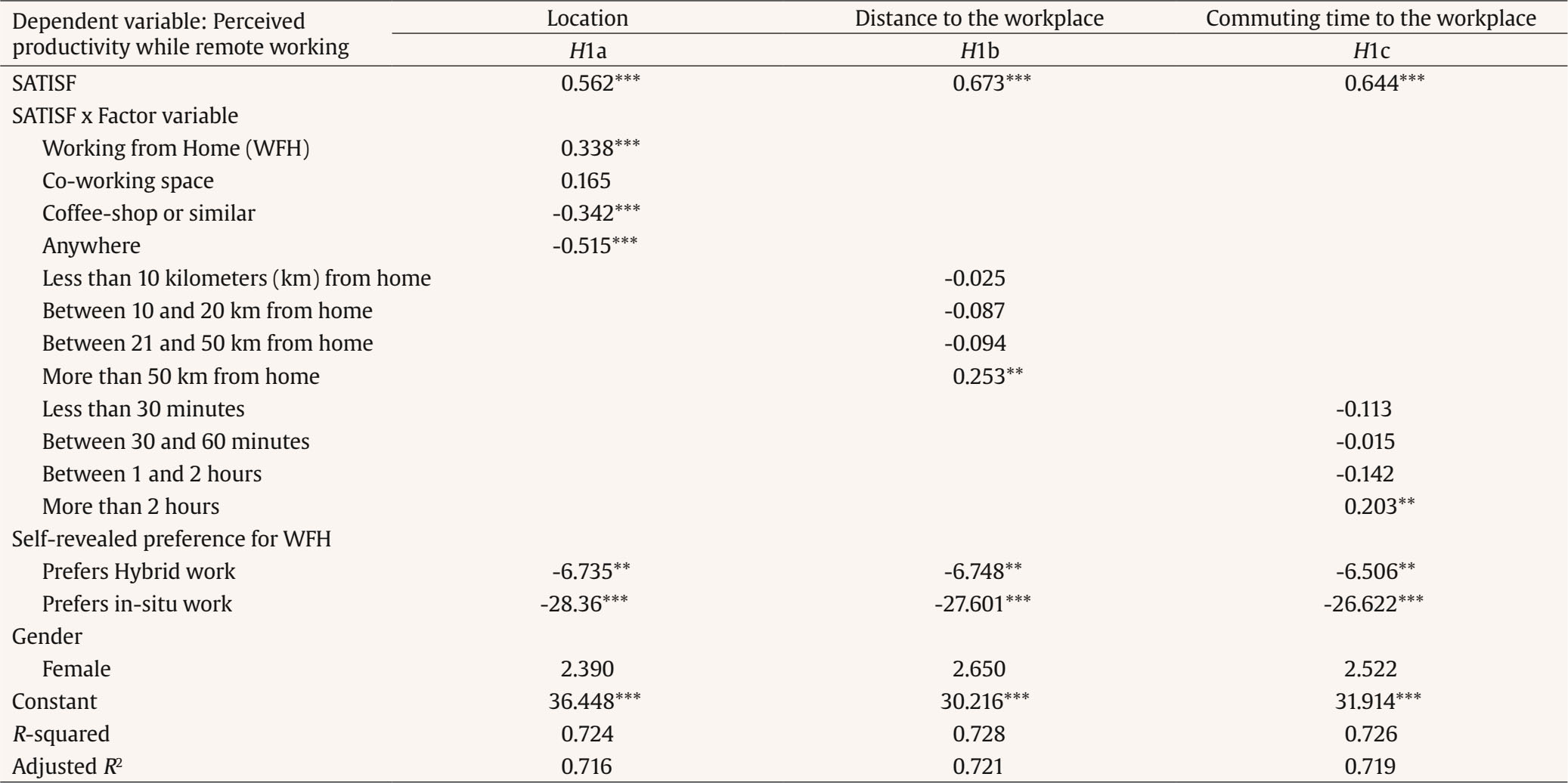 Note. Source: Author elaboration. WFH = working from home. *p < .05, ** p < .01, ***p < .001. Hypothesis 1a WFH strengthened the relationship between employee satisfaction with the WFH job and self-perceived productivity, which was more potent when the employee worked from home than remotely from locations other than the employee’s residence. This finding is consistent with Lapshun and Madero’s (2023) results. Interestingly, working remotely from a public setting (e.g., a co-working space) had a positive sign but did not attain statistical significance, probably because not all these spaces present ideal conditions for WFH. Working remotely from a coffee shop or similar reduced the strength of the job satisfaction-perceived productivity relationship. This finding aligns with Cuerdo-Vilches et al.’s (2021) results, thereby underscoring the importance of dwelling quality (noise level, air quality, lighting) on the teleworkers’ job satisfaction-productivity relationship. Not surprisingly, in our data, the group that declared having no dedicated place to work remotely had the weakest satisfaction-productivity relationship. These findings highlight that WFH location is crucial to a positive relationship between teleworker satisfaction and productivity. Specifically, satisfied teleworkers who have reservations about their ability to control their job from an inadequate location do not necessarily feel productive, even if they remain satisfied with the convenience of their WFH arrangement. As Thompson et al. (2022) mentioned, avoiding distractions at work is one of the primary reasons for WFH. Table 3 shows that the relationship between SATISF and PRODUCT is strongest when WFH. To better understand this moderation, we plotted one standard deviation above and below the mean for the interacting variables. Figure 2 shows that the relationship between SATISF and PRODUCT is consistently upbeat but more robust for employees WFH. Furthermore, Aiken and West (1991) observed that a significant interaction coefficient implies that the slopes of the lines differ significantly from each other. Figure 2 illustrates the significant two-way interaction effects for Hypothesis 1a. Hypothesis 1b The interaction between SATISF and distance from home to the workplace supported this hypothesis. All the regression coefficients below the most distant location (50 kilometers) exhibited negative non-significant impacts. In contrast, the most distant, 50-km category showed a positive and statistically significant coefficient, hence suggesting that the relationship between job satisfaction and perceived productivity is highest when the alternative is commuting from a far distant location. Hypothesis 1c The interaction between SATISF and the commuting time variable had similar results. Once again, all the coefficients below the longest commuting time to the workplace (more than 2 hours) show adverse, non-significant effects. In contrast, the more than 2 hours category was positive and statistically significant, thus suggesting that the relationship between job satisfaction and perceived productivity is highest when the alternative of commuting to the workplace is likely to take more than two hours. In summary, our findings suggest that the site from which an employee teleworks and the duration of their potential commuting, if the employee worked at the office instead of WFH, influence the relationship between job satisfaction and perceived productivity. Although working from home markedly enhances the positive correlation between job satisfaction and productivity, lacking a specific workspace or working in public spaces generally weakens this relationship because it removes an employee’s ability to control every aspect of the job; therefore, an employee’s ability to feel fully productive. Additionally, the longer the time and the distance required by the commute, the greater the teleworker job satisfaction-productivity relationship because satisfied teleworkers also feel that their remote job allows them to conserve personal resources that they would otherwise deplete in an overly long commute. Occupational Characteristics as Moderators of the SATISF-PRODUCT Relationship The coefficients associated with the main effect of SATISF exhibited positive and significant values in all three models (Table 4). The adjusted R-squared value for all three models indicated that the model explained 70% of the variance in the productivity variable. The self-revealed preference variable consistently displayed negative and statistically significant coefficients in line with previous findings. Table 4 Hypothesis 2: Occupational Characteristics  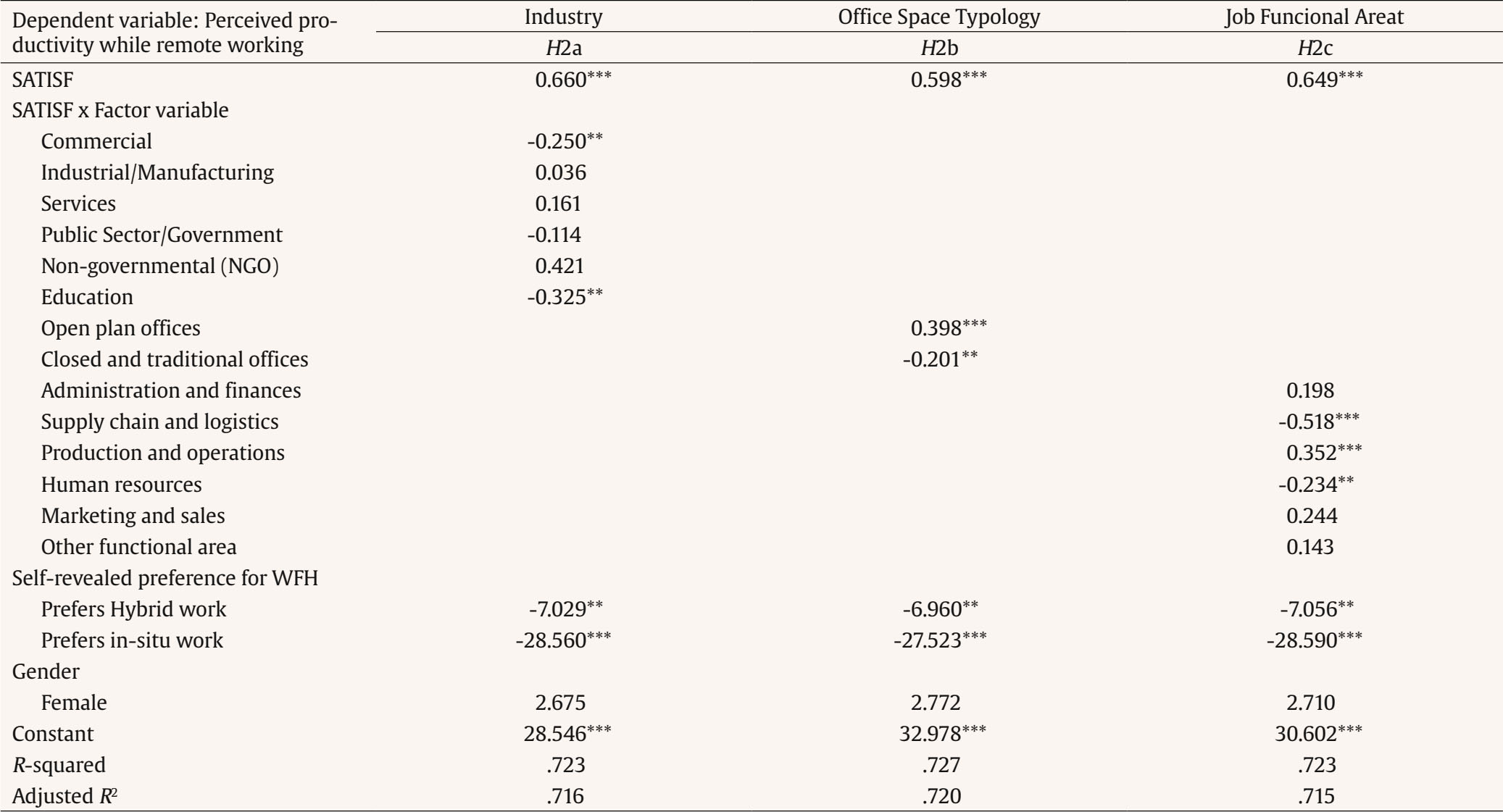 Note. Source: author elaboration. WFH = working from home. *p < .05, **p < .01, ***p < .001. Hypothesis 2a Table 4 shows that two interaction terms emerged as significant regarding moderation across industries. First, compared to the rest of the industries, the satisfaction-productivity relationship was weaker among those in commercial and education jobs. The fact that social interactions are a vital job component in both industries explains this difference because employees cannot exercise complete control over their jobs due to their WFH arrangement (Figure 3). Hypothesis 2b The interaction between SATISF and the type of office space also had noteworthy results. Among those who preferred open-plan offices, the job satisfaction-productivity relationship appeared more optimistic than respondents who preferred traditional, closed office spaces. These findings resemble research on the optimal environment for WFH (Marques de Macêdo et al., 2020; Thompson et al., 2022). Hypothesis 2c The interaction between SATISF and job functional areas revealed that functional areas like administration and marketing showed positive, albeit statistically non-significant, coefficients. However, consistent with this hypothesis, productivity was negatively associated with telework job satisfaction in functional areas related to production, operations, supply chain, and logistics. These functional areas rely heavily on in-person work activities (López-Igual & Rodríguez-Modroño, 2020). These findings are unsurprising because teleworkers can likely not conduct in-person activities while WFH. The Human Resources area also showed a similarly negative coefficient owing to the limitations in live interactions imposed by WFH, which likely prevent job-satisfied teleworkers from feeling fully productive. As predicted, certain occupational features moderate the association between job satisfaction and perceived productivity. Firstly, satisfaction with WFH was not as closely related to perceived productivity in education and sales occupations, probably because success depends heavily on in-person interactions that are hardly performed remotely. Secondly, among those who preferred to work in open-space offices, job satisfaction, and productivity correlated more than those preferring traditional, closed-office designs. Lastly, the relationship between satisfaction with one’s WFH job and productivity was weaker among employees in functional areas that depend heavily on in-person activities limited by telework, such as production, logistics, operations, and human resources. WFH has evolved a great deal since the COVID-19 pandemic. The prediction that WFH is here to stay aligns with increasing interest in this practice (Oviedo-Gil & Cala Vitery, 2023; Ton et al., 2022). However, large corporations like Amazon and Dell demand that their employees cease WFH and return to work at corporate offices (Hirsch, 2024), which attests to corporate skepticism about the benefits of WFH. This skepticism is probably fueled by anecdotal evidence suggesting that employee satisfaction with one’s teleworking arrangement does not always ensure employee productivity. Our study aimed to uncover precisely the boundary conditions under which employee satisfaction with their WFH arrangement is most closely associated with their perceived ability to be productive while WFH. Our findings pinpoint the moderators that strengthen the positive relationship between satisfaction with WFH and self-perceived productivity. First, satisfied teleworkers appear to feel most productive when they count on a dedicated workspace at home. This result is consistent with Danilova et al.’s (2023) findings, and it suggests that reports claiming that WFH contributed to family-work conflict during COVID-19 might be explained by the absence of adequate home-office space (Galanti et al., 2021). While many people were initially unprepared for effective WFH at the start of the COVID-19 pandemic, our research hints that satisfaction with WFH and productivity are more likely to go hand-in-hand when remote work is done from home, without the distractions of busy public places like crowded coffee shops. The personal resources (e.g., time, energy) consumed by distractions, as well as how distractions likely interfered with the ability to control one’s job, might explain why lacking a dedicated remote workspace reduced the satisfaction-productivity relationship in our data, as predicted by COR (Hobfoll et al., 2018) and job demands-control (Karasek, 1979) theories, respectively. Commuting time and distance also influenced the satisfaction with the WFH-productivity relationship. As COR theory (Hobfoll et al., 2018) predicted, a long commute consumes excessive personal and even financial resources (Lara-Pulido & Martinez-Cruz), which workers prefer to conserve through WFH. Thus, when the alternative to WFH implies a long commute, employees are understandably more satisfied with their jobs and feel more productive. Specifically, our data suggested that less than a 50 km distance or less than 2 hours of daily commuting time function as cutoffs beyond which employees feel commuting is wasteful and, hence, they experience the need to conserve personal resources like time and energy. These results are consistent with prior findings by Lara-Pulido and Martinez-Cruz (2022), Stoian et al. (2022), and Wang et al. (2023), who identified commuting time and distance as key WFH motivations. We found that some occupational characteristics also moderated the satisfaction with the WFH-self-perceived productivity relationship. Specifically, employee satisfaction with their WFH job was less likely to be accompanied by self-perceived productivity in commercial or education occupations than in other occupations (see Figure 3). As our hypotheses anticipated, this weakened relationship might be explained by limits to job control (Karasek, 1979) imposed by WFH in occupations where face-to-face interactions are critical (e.g., teaching and sales). WFH has evolved from an occasional ad hoc arrangement years ago to a widespread employment modality in today’s world of work. One of our study’s primary contributions is helping employers outline the circumstances under which employees who are satisfied with their WFH job will likely see themselves as productive. For instance, our findings pinpointed boundary conditions like excessively long commuting that make teleworkers feel that a satisfactory WFH job will most likely render them productive. On the contrary, in certain occupations like teaching and sales, employee satisfaction with their WFH arrangement is not necessarily associated with the employee perception of productivity. WFH does not ensure enough opportunities to perform in-person activities critical for occupational success. Overall, our findings should serve as a reminder that employee satisfaction with their WFH arrangement is insufficient to consider that employees feel they are productive while WFH. Corporate calls to “go back to the office” might thus make at least partial sense when employees perceive limitations in their ability to be productive despite high employee satisfaction with their WFH arrangement. Limitations and Further Research Despite our cross-sectional, all-self-report design, the statistically significant moderators uncovered in our study are hardly explained by method variance, which is unlikely to inflate this non-linear relationship (Crampton & Wagner, 1994; Saunders, 1956). However, future research should capture longitudinal trends in the relationship between satisfaction with WFH and productivity over time. While longitudinal trend analysis is not always practically feasible when conducting organizational research, future studies should utilize cross-lagged, or panel designs, to monitor and further validate the evolution of the findings reported here. Theorists have posited that teleworkers craft their work and nonwork roles to satisfy their needs while enhancing job outcomes over time (Biron et al., 2023). For instance, prolonged social isolation might reduce satisfaction with WFH, hence augmenting the employee’s desire to return to the office and interact with others, even when such interactions do not necessarily make the employee more productive. Conversely, teleworkers might become more productive as they learn to master WFH technology to conduct online interactions that are as consequential in terms of productivity as face-to-face interactions can be. We advocate for further research on how to use technological innovations that augment the effectiveness of remote, electronic interactions, thereby attenuating teleworkers’ perceived productivity limitations while WFH. Examining the effects of third variables on the employee satisfaction with WFH-productivity relationship is crucial to thoroughly understanding how WFH influences individuals, groups, and organizations. Our research highlighted the influence of contextual factors, including commuting time and distance, that consume plenty of scarce personal resources and thus make satisfied teleworkers feel productive. Differences in the availability, comfort, and cost of commuting, including public transportation, will likely alter the relationship under study and warrant further research. From a practical standpoint, organizations concerned with work-life balance should remain open to WFH arrangements, but probably not at the expense of setting employees up for failure in a WFH arrangement where they see themselves unable to be productive. Future research should explore reliable and valid ways to inquire about teleworkers’ honest perceptions of their ability to remain productive while WFH. Questions might explicitly inquire about the need for facilitating conditions reported to make WFH more effective in prior research (e.g., instrumental and emotional support, temporal flexibility; Ahmad et al., 2022), which might also strengthen the relationship between satisfaction with WFH and self-perceived productivity. Research on how to best conduct these inquiries seems particularly important when those satisfied with their WFH arrangement are understandably afraid of losing their WFH privileges by being called back to work at the corporate office if they express their honest views on how WFH limits their control over tasks that increase their productivity. Conflict of Interest The authors of this article declare no conflict of interest. Cite this article as: del Castillo, E., Madero, S., Lapshun, A., & Sanchez, J. I. (2025). When do teleworkers feel both job-satisfied and productive? Boundary conditions of the telework satisfaction-productivity relationship. Journal of Work and Organizational Psychology, 41(2), 39-49. https://doi.org/10.5093/jwop2025a5 References |
Cite this article as: Castillo, E. D., Madero, S., Lapshun, A., & Sanchez, J. I. (2025). When Do Teleworkers Feel both Job-Satisfied and Productive? Boundary Conditions of the Telework Satisfaction-Productivity Relationship. Journal of Work and Organizational Psychology, 41(2), 39 - 49. https://doi.org/10.5093/jwop2025a5
Correspondence: e.delcastillo@tec.mx (E. del Castillo).
Copyright © 2025. Colegio Oficial de la Psicología de Madrid


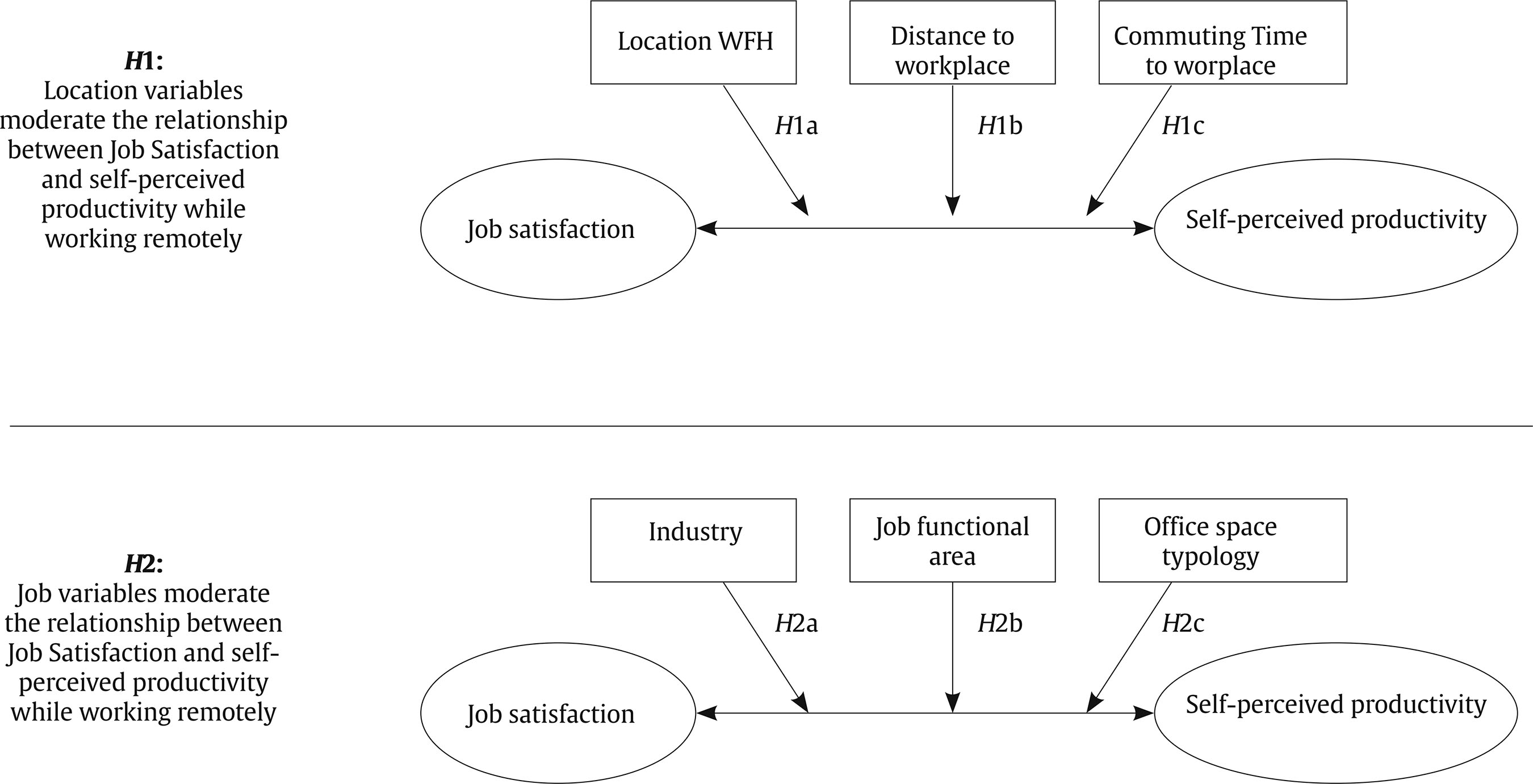
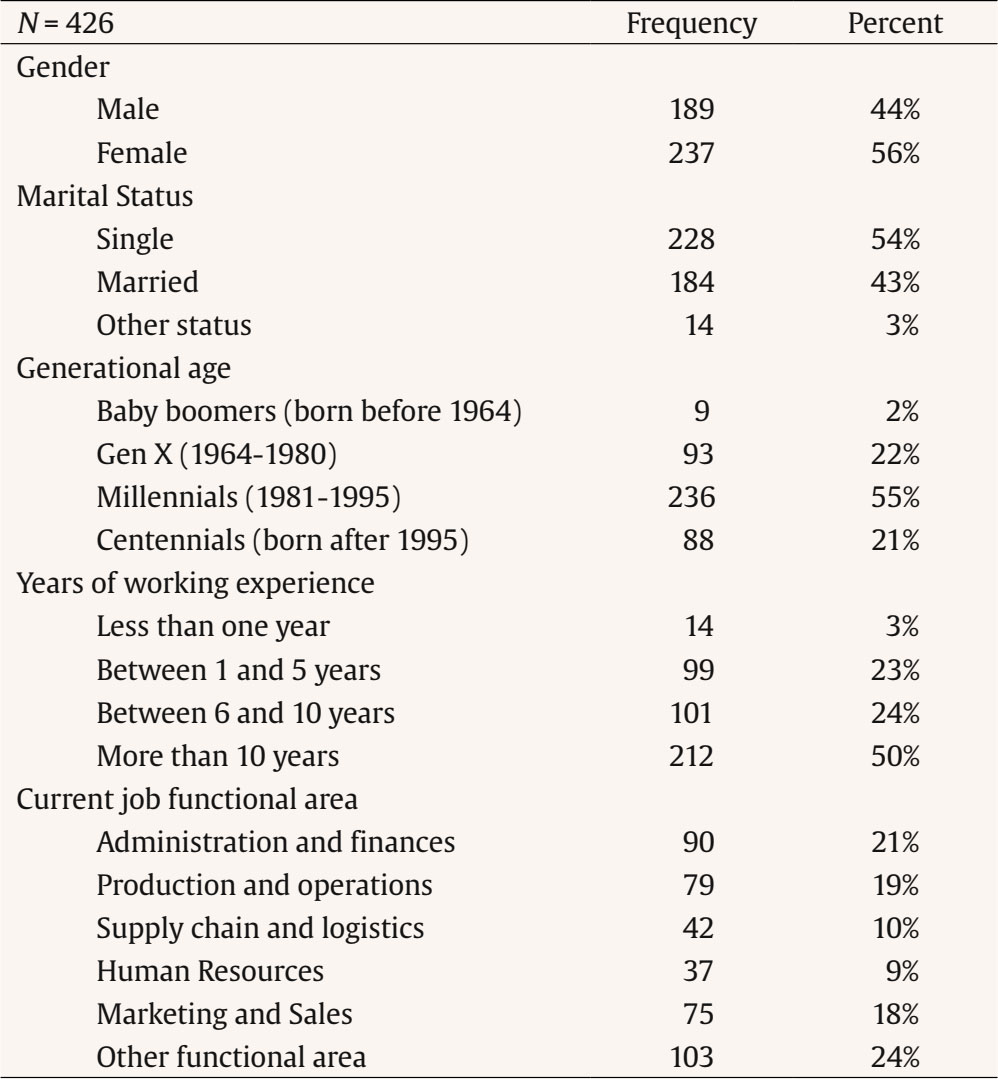
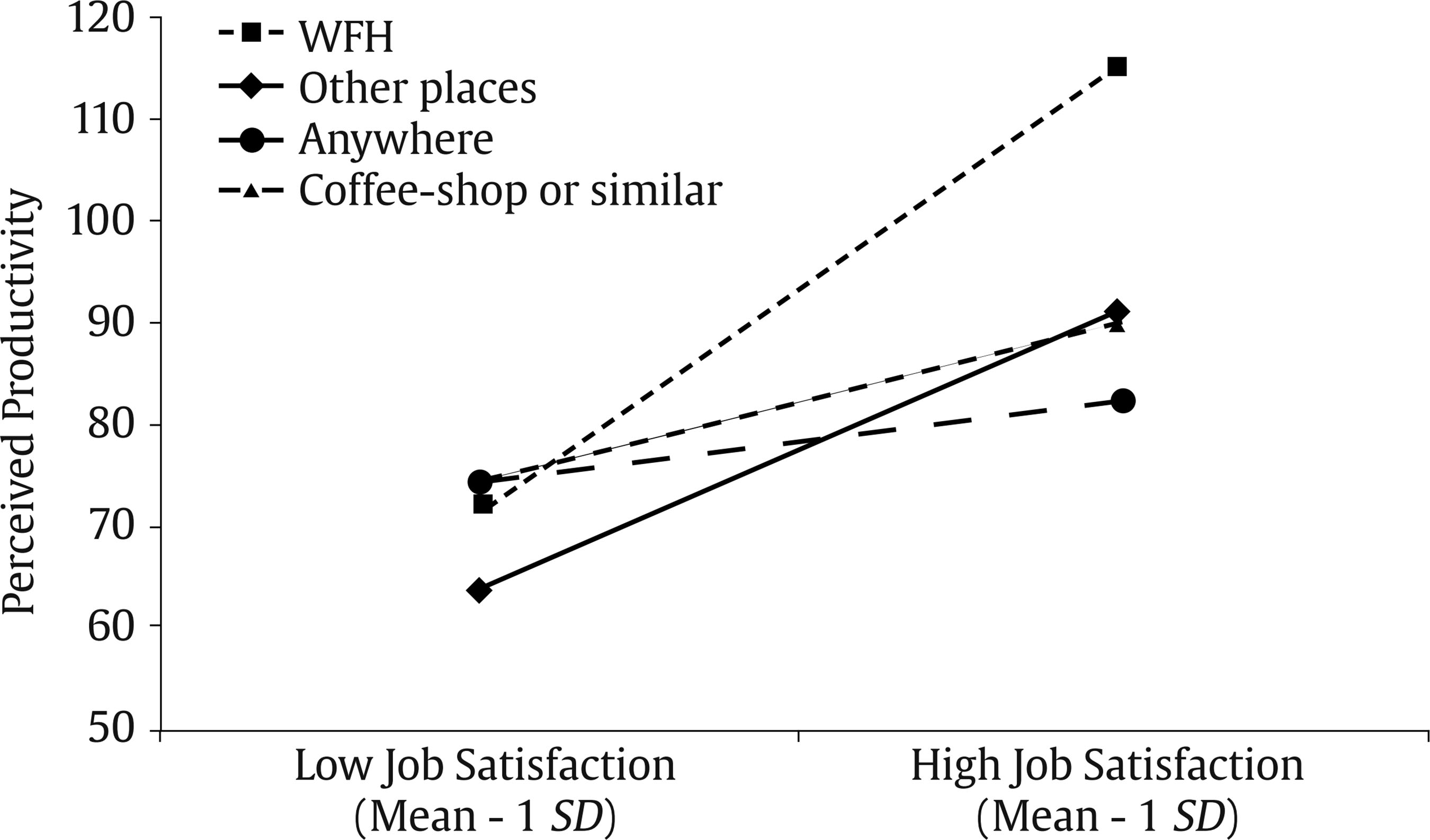
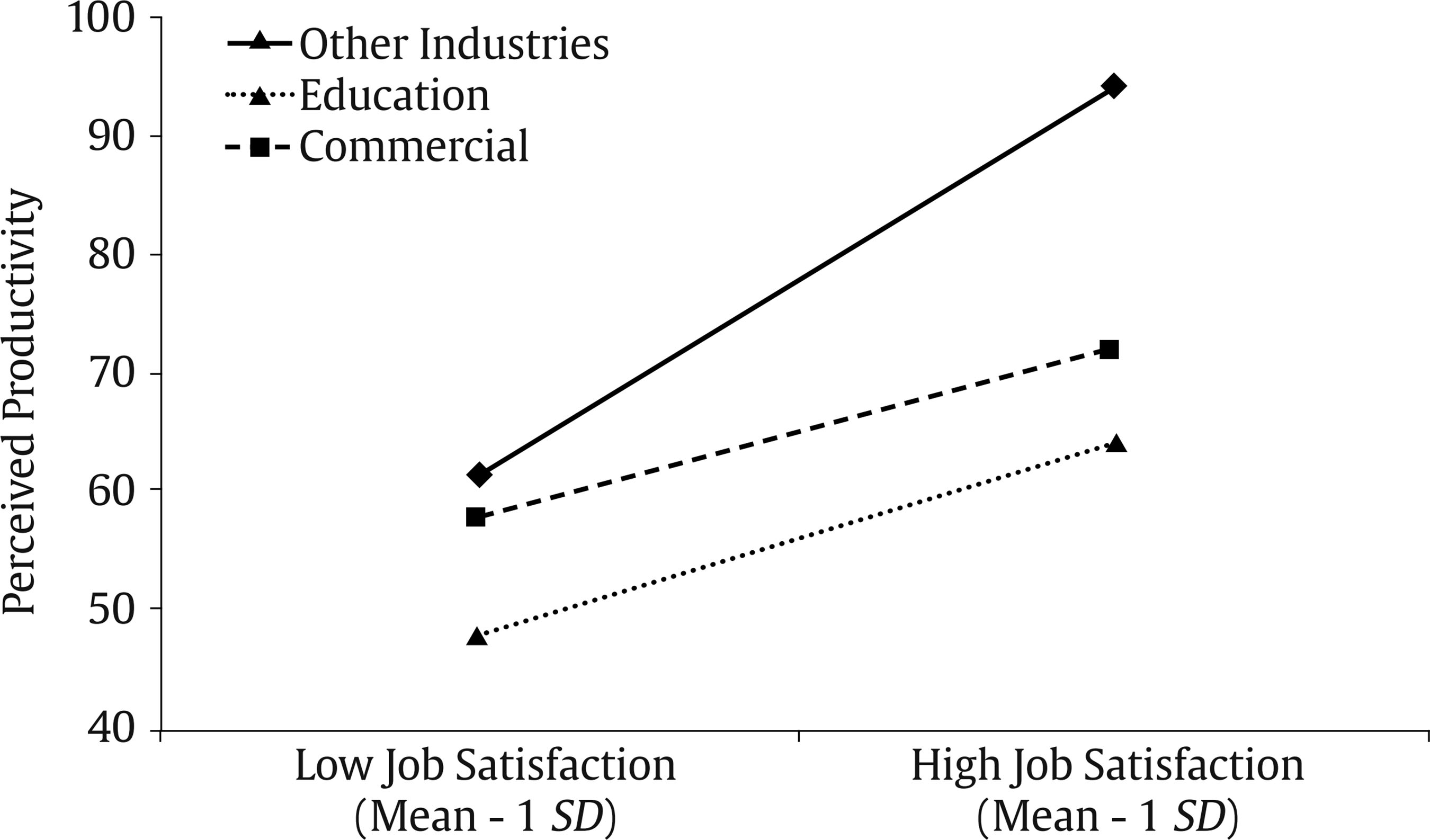
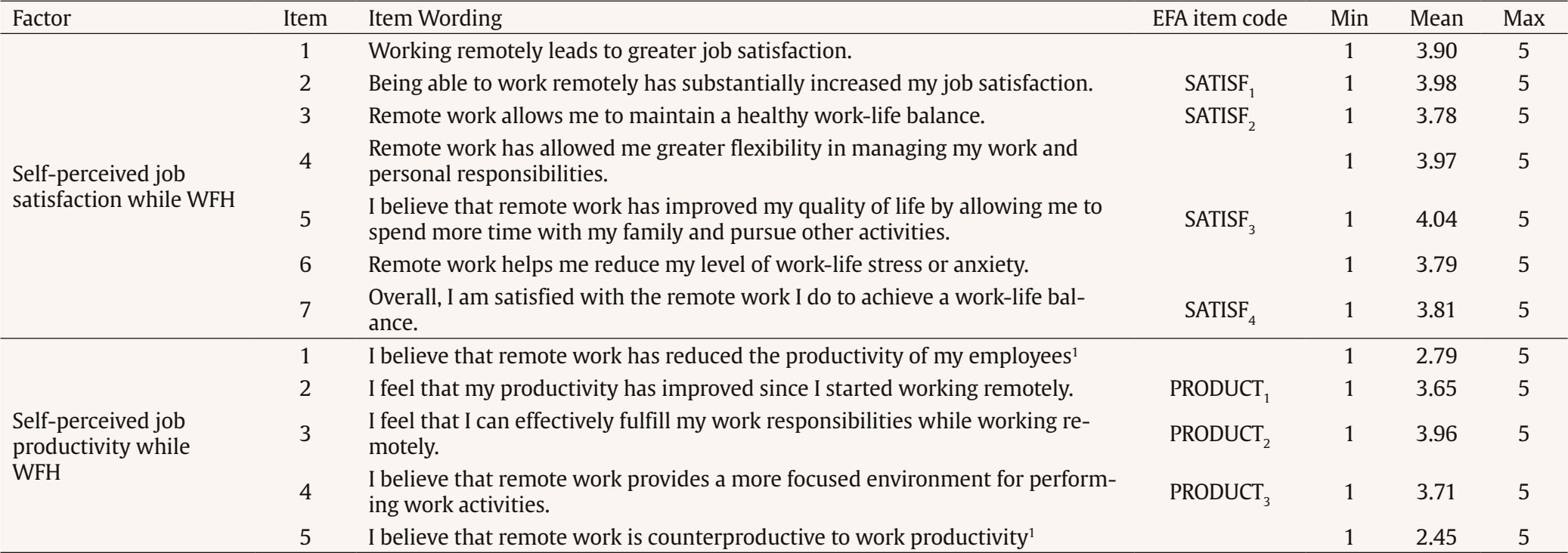






 e-PUB
e-PUB CrossRef
CrossRef JATS
JATS
